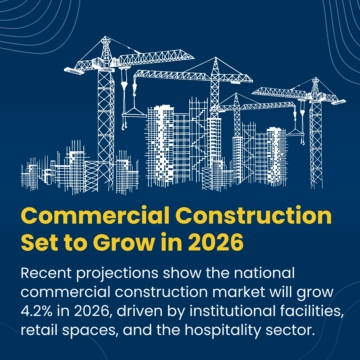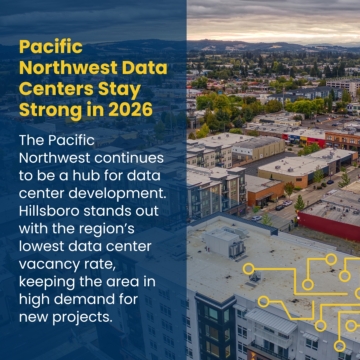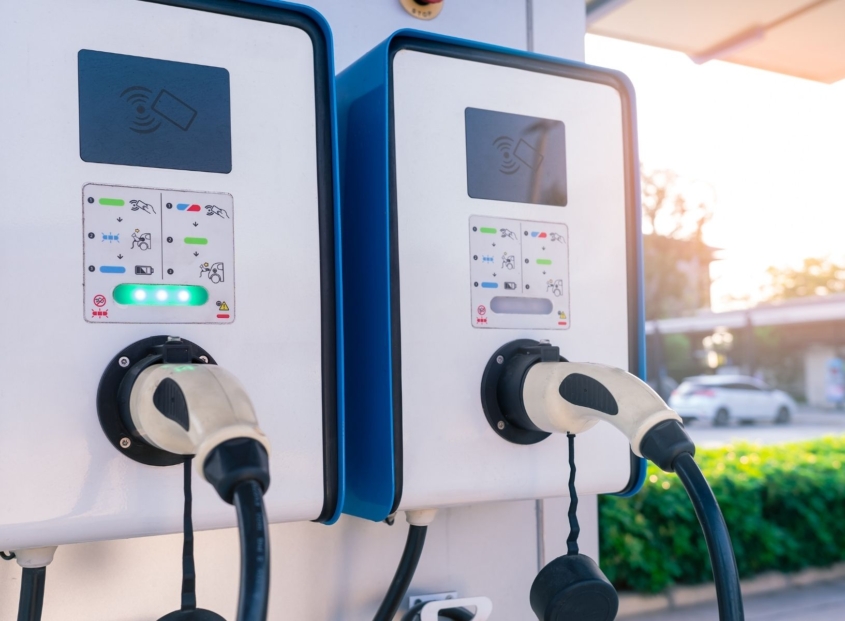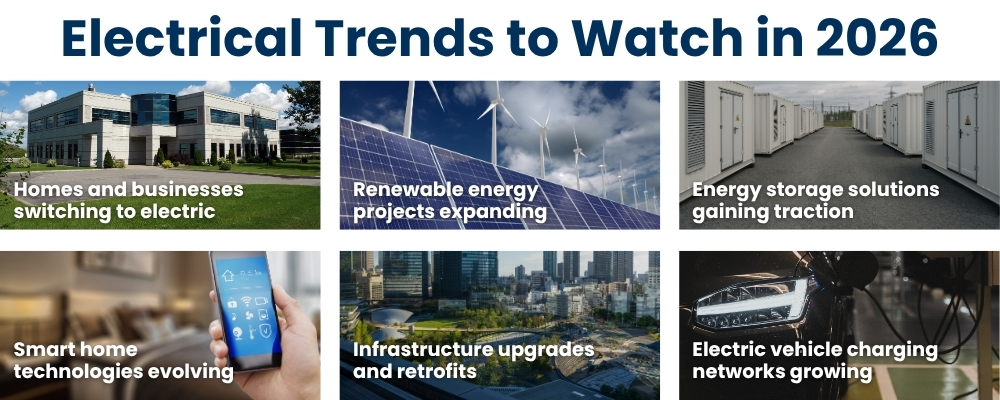2026 Electrical Industry Outlook: Changes, Challenges & Possibilities
The electrical industry is heading into 2026 with mixed signals.
Economic uncertainty, stalled projects, and challenges and unpredictability in the labor market are creating concerns within the community. At the same time, the push toward electrification needs the electrical workforce to help with infrastructure to meet rising energy demand.
The State of Commercial & Residential Construction
Let’s start with the challenging part: some commercial and residential projects are expected to face another tight year. The good news is that recent projections show the national commercial construction market will grow 4.2% in 2026. Institutional facilities, retail spaces, and hospitality sectors are expected to help drive the increase. 
However, economic uncertainty and regulatory shifts create variables that require adaptation. What’s driving the uncertainty?
- Paused or delayed federal projects tied to new policies and funding reviews.
- Power grid upgrade delays which are bottlenecking data center projects.
- Fluctuating material costs, especially in steel and aluminum.
- Unpredictable interest rates making developers hesitant to start new builds.
Economic unease is already affecting new home construction. 2025 stats show an 8.5% drop in August. However, even in a slowing market, projects are still ongoing; they might have shifted to meet the current climate.
What’s Ahead for Electrical Projects in 2026
Even with some projects slowing down, 2026 brings several emerging areas worth watching. The continued push for electrification, renewable energy installations, energy storage systems, and smart home technologies is creating demand for skilled electrical work. Infrastructure upgrades, commercial retrofits, and expanding electric vehicle charging networks also present exciting opportunities.
1) Facility Upgrades & Retrofits
Aging infrastructure across public and private sectors is overdue for modernization. For electricians, this could mean opportunities in:
- Public transit upgrades, including lock-out/tag-out procedures and examining panel layouts.
- Electrical infrastructure updates in commercial real estate projects.
- Modernization efforts that require panel upgrades, rewiring, lighting conversions, and automation systems.
2) “Greening” & Energy Transition Projects
Demand for green technology and energy-efficient infrastructure is growing. Sustainable and energy-generating buildings help boost property values and promise reduced residential energy costs.
Emerging trends in the electrical industry include:
- Thermal energy networks (TENs): tapping into underground heat to power buildings.
- Fault-managed power (FMP): self-monitoring setups that improve safety and efficiency.
- EV Infrastructure: continued installation of commercial and residential charging stations.
- Building electrification retrofits: converting gas-based systems to electric.
3) Data Centers & High-Energy Facilities
The reality nationally is that data center construction is down 17%. Power grid limitations have slowed progress in some areas, which is driving up vacancy rates and halting new construction. However, the Pacific Northwest continues to be a hub for data center development and is holding firm. Hillsboro has the lowest data center vacancy rate, at only 0.2%, compared to the national 1.6%.
driving up vacancy rates and halting new construction. However, the Pacific Northwest continues to be a hub for data center development and is holding firm. Hillsboro has the lowest data center vacancy rate, at only 0.2%, compared to the national 1.6%.
Even though data center projects are progressing more slowly than expected, when they do ramp up, they’ll need skilled electricians to deliver:
- High-voltage expertise
- Redundant power systems guidance
- Ongoing maintenance
Keep the Electrification of Everything in Mind
The electrification of everything is continuing to shape the industry, and it could create new opportunities for electricians. Homes and buildings are increasingly switching to electric heating and cooling, and electric vehicle charging networks are growing. Renewable energy investments and a growing tech sector are also changing the types of projects available.
Stay Connected with NECA-IBEW Local 48
Innovation moves fast, but you don’t have to figure it out on your own. Through the NECA–IBEW Local 48 partnership, you can access training, resources, and a network of fellow electricians who understand the challenges you face. It’s a community where you can learn, share, and stay connected as the industry evolves.
Visit the Oregon-Columbia Chapter of NECA or IBEW Local 48 to learn more about membership and resources.
SIGN UP FOR OUR NEWSLETTER



